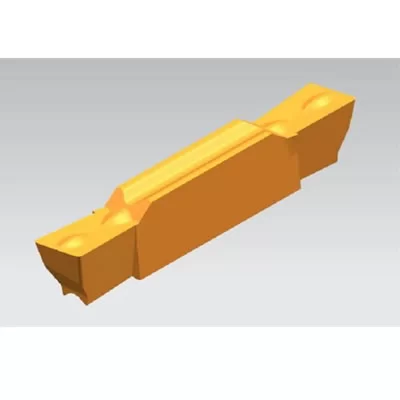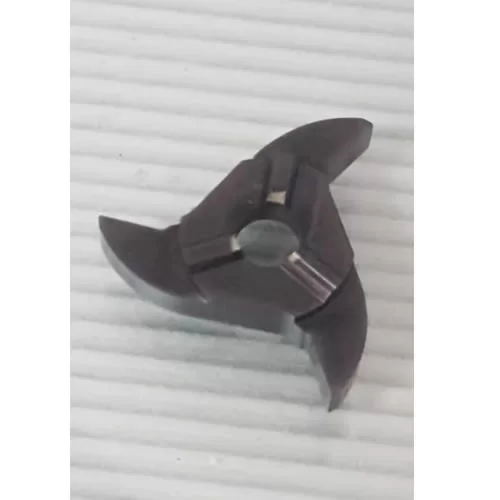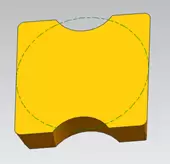Correct Usage Of End Mill
Correct usage of end mill
When milling complex workpieces on the milling machining center, the following problems should be paid attention to when using the numerical control end milling cutter:
1. The end milling cutter used in the clamping machining center of the end milling cutter mostly adopts the spring clamp set clamp mode, which is in the cantilever state when used. In the process of milling, sometimes the end milling cutter may gradually extend out of the tool holder, or even completely drop, resulting in the phenomenon of workpiece scrapping. Generally, the reason is that there is an oil film between the inner hole of the tool holder and the outer diameter of the end milling cutter shank, resulting in insufficient clamping force. The end milling cutter is usually coated with antirust oil when leaving the factory. If the non-water soluble cutting oil is used during cutting, the inner hole of the cutter holder will also be attached with a layer of mist like oil film. When there is oil film on the handle and the cutter holder, it is difficult for the cutter holder to firmly clamp the handle, and the milling cutter will be easy to loose and fall during processing. Therefore, before the end milling cutter is clamped, the handle of the end milling cutter and the inner hole of the cutter clamp shall be cleaned with cleaning fluid and then clamped after being dried. When the diameter of the end mill is large, even if the handle and the clamp are clean, the cutter may fall off. In this case, the handle with a flat notch and the corresponding side locking method should be selected.
2. Vibration of end mill
Due to the small gap between the end milling cutter and the cutter clamp, the cutter may vibrate during the machining process. The vibration will make the cutting amount of the circular edge of the end milling cutter uneven, and the cutting expansion is larger than the original set value, which will affect the machining accuracy and the service life of the cutter. However, when the groove width is too small, the tool can vibrate purposefully, and the required groove width can be obtained by increasing the cutting expansion, but in this case, the maximum amplitude of the end mill should be limited below 0.02mm, otherwise stable cutting cannot be carried out. The smaller the vibration of the neutral milling cutter is, the better. When the tool vibration occurs, the cutting speed and feed speed should be reduced. If there is still a large vibration after both have been reduced by 40%, the amount of snack tool should be reduced. If resonance occurs in the machining system, it may be caused by factors such as excessive cutting speed, insufficient rigidity of the tool system due to feed speed deviation, insufficient clamping force of the workpiece, and workpiece shape or clamping method. At this time, it is necessary to adjust the cutting amount and increase the cutting amount.
The rigidity of the tool system and the improvement of the feed speed.
3. End cutting of end milling cutter
In the NC milling of die cavity, when the point to be cut is a concave part or a deep cavity, it is necessary to extend the extension of the end milling cutter. If a long edge end mill is used, it is easy to produce vibration and cause tool damage due to its large deflection. Therefore, in the process of machining, if only the cutting edge near the end of the tool is required to participate in the cutting, it is better to choose a short edge long shank end mill with a long total length of the tool. When a large diameter end mill is used in a horizontal CNC machine tool to process workpieces, due to the large deformation caused by the dead weight of the tool, more attention should be paid to the problems that are easy to occur in the end cutting. When the long edge end mill must be used, the cutting speed and feed speed need to be greatly reduced.
4. Selection of cutting parameters
The choice of cutting speed mainly depends on the material of the workpiece to be processed; the choice of feed speed mainly depends on the material of the workpiece to be processed and the diameter of the end mill. Tool samples from some foreign tool manufacturers are attached with tool cutting parameter selection table for reference. However, the selection of cutting parameters is affected by many factors such as machine tool, tool system, shape of workpiece to be processed and clamping method. The cutting speed and feed speed should be adjusted according to the actual situation. When the tool life is the priority, the cutting speed and feed speed can be reduced properly; when the chip is not in good condition, the cutting speed can be increased properly.
5. Selection of cutting mode
The use of down milling is beneficial to prevent blade damage and improve tool life. However, two points need to be noted: ① if ordinary machine tools are used for machining, it is necessary to eliminate the gap between the feeding mechanism; ② when there is oxide film or other hardening layer formed by casting and forging process on the surface of the workpiece, it is advisable to use reverse milling.
6. Use of carbide end mills
High speed steel end mills have a wide range of application and requirements. Even if the cutting conditions are not properly selected, there will not be too many problems. Although the carbide end milling cutter has good wear resistance in high-speed cutting, its application range is not as wide as that of high-speed steel end milling cutter, and the cutting conditions must strictly meet the use requirements of the cutter.

















